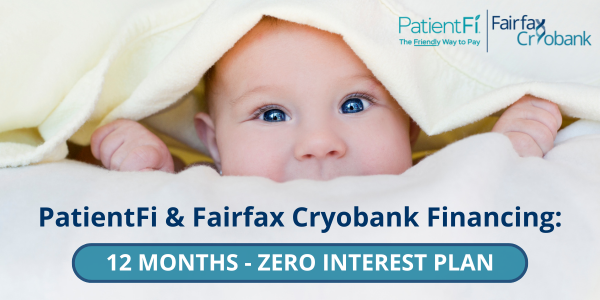What to Expect at a Fetal Echocardiogram
New Mom, Christina Barnes, RN, shares what to expect when getting a Fetal Echocardiogram

When I was 24 weeks pregnant, I had a fetal echocardiogram. A fetal echocardiogram, also known as a fetal echo, is an ultrasound that looks specifically at the fetus’ developing heart. A pediatric cardiologist or specially trained ultrasound technician performs the test, and the results are generally discussed immediately afterward with the pediatric cardiologist. The test feels very similar to the 20-week anatomy scan; it is done using abdominal ultrasound in a dark room with images of the baby up on a screen. However, instead of looking at the entire baby, this test focuses on the structure and function of the heart. The provider will look at the walls and valves of the heart, as well as the blood vessels and arteries attached to the heart. The goal of the test is to check for heart defects in the fetus and any sign that the heart is not developing normally. The fetal echo is usually done in the second trimester, between 18 and 24 weeks gestation.
Given my medical history, I was at an increased risk of having a baby with a heart defect. At my 20-week anatomy scan the high-risk OB-GYN reviewed the ultrasound images and told me that while she did not see any abnormalities of the heart, she still recommended that I have a fetal echocardiogram. She explained that the images from the 20-week scan show the overall structure of the heart but may not show the smaller details that could be associated with certain defects. If I were not at a higher risk based on my medical history, she would not have referred me for a fetal echo. However, since my medical history put my fetus at a higher than normal risk of developing a heart defect, she recommended the additional testing. The OB-GYN’s office sent over a referral to the pediatric cardiology department at the children’s hospital, and the cardiology department contacted me to schedule the procedure.
Fetal echocardiograms are recommended in a number of situations. If a possible abnormality of the heart is detected during a routine ultrasound, such as the 20-week anatomy scan, the provider will likely refer to the pregnant woman for a fetal echo. Women with a personal or family history of congenital heart defects or a previous child born with a heart defect may be referred for a fetal echo. Some medications taken by a pregnant mother can cause heart defects in a fetus, so if a woman takes any of those medications during pregnancy she may need a fetal echo to rule out any abnormalities. Medical conditions such as lupus and diabetes can affect fetal development and may cause heart defects, so women with these conditions often have a fetal echo.
On the day of my fetal echo, I was 24 weeks pregnant. My pregnancy had been largely uneventful; every appointment and scan thus far had been normal and when people asked me how I felt, I told them that I actually enjoyed being pregnant. I loved feeling the baby flutter and talking to him whenever we were alone. I was optimistic in the second trimester; we had made it through the morning sickness and the uncertainty of the first trimester, and I felt more attached to him every day. Throughout the pregnancy, I had been careful not to play out the many “what if” worst-case scenarios in my head: What if there’s something wrong on the anatomy scan? What if we don’t hear the heartbeat at the next appointment? I tried not to entertain these fears leading up to the fetal echo, but on the day of the procedure, I was incredibly anxious. What if there is something wrong with the heart? What if the baby needs surgery? The most difficult part for me was the uncertainty, and I knew I would feel better once the fetal echo was over.
My fetal echo was scheduled in the afternoon at the outpatient cardiology clinic at the local pediatric hospital. I felt strange being the only adult patient in a waiting room full of children, but the woman at the front desk was unfazed and assured me that they see many pregnant women every day. After I checked in, a nurse brought me back into a dark room similar to the ultrasound rooms at my OB-GYN’s office. I climbed onto the exam table and tried to get comfortable. I, fortunately, did not need to have a full bladder for the scan, so I was able to use the restroom before we started.
I waited alone in the room for a few minutes, anxiously looking around at the equipment. There was a large television screen on the wall to my left, an ultrasound machine to my right, and a sink behind my chair. I could hear children in the hallway walking to and from their examination rooms, asking questions, and pointing out pictures on the walls. A young friendly physician came into the room and introduced herself as the pediatric cardiology fellow; she told me that she would be performing the fetal echocardiogram. She asked me to lie back on the table and uncover my stomach. She started by squeezing warm gel onto my abdomen and then gently moved and pushed the ultrasound wand over my belly. Images of the fetus lit up the television to my left and I watched the screen as she zoomed in and out, taking pictures and measuring parts of the heart and blood flow. Unlike the anatomy scan, she did not focus on the baby’s face, his tiny feet, or his wiggly hands. The physician-focused only on the heart and vessels, and for most of the scan, I couldn’t tell what I was looking at unless she carefully explained the images. The scan lasted about an hour, was completely painless, and if anything a little bit boring.
After the scan was over, I waited about 20 minutes for the cardiology fellow and supervising attending to review the fetal echo images. The fellow physician who did the scan brought me into the attending physician’s office, where they both discussed the findings with me. They explained what parts of the heart and vessels they focused on, what specific defects they wanted to rule out given my medical history, and whether or not they recommended any further fetal cardiac testing. They told me that my results were normal and that they did not find any evidence of a cardiac defect or abnormality. If they had found signs of a cardiac defect, they would have shared their plans for additional prenatal testing and/or medical interventions after birth. I prepared a list of questions for them beforehand, which they happily answered.
Overall, the fetal echo was a comfortable and painless experience. The most difficult part for me was waiting to hear the results, but once I spoke with the cardiologists I felt much better. It was important to me to know whether or not my baby would be born with a heart condition since he was at an increased risk of developing a cardiac defect. If he were to need cardiology care, my husband and I wanted to be prepared. We wanted to be able to process the information and develop a plan over the months leading up to the baby’s birth. Fortunately, our fetal echo results did not show a cardiac defect, and about 3 months later I delivered a healthy baby boy.

Check out Christina’s other post “Why I Chose to Have Genetic Testing Done”







